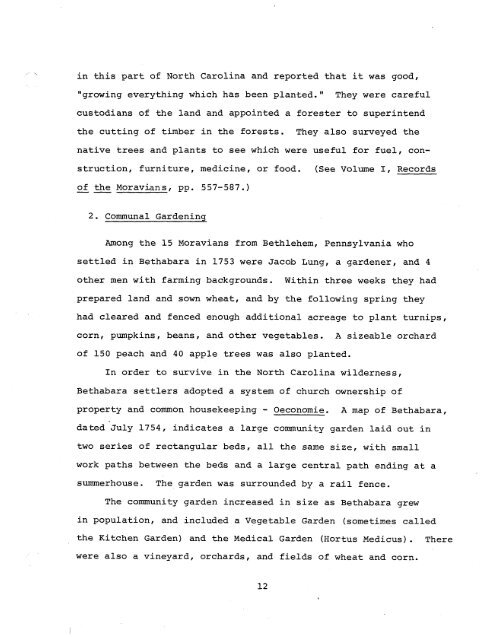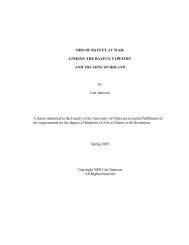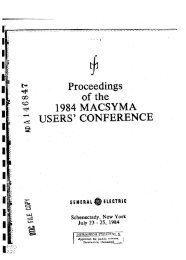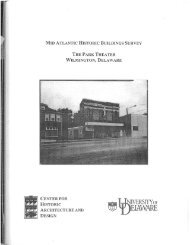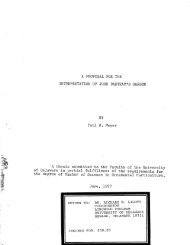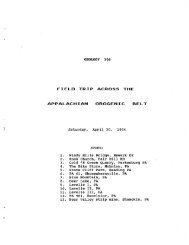Newark, DE 19711 - University of Delaware Library Institutional ...
Newark, DE 19711 - University of Delaware Library Institutional ...
Newark, DE 19711 - University of Delaware Library Institutional ...
You also want an ePaper? Increase the reach of your titles
YUMPU automatically turns print PDFs into web optimized ePapers that Google loves.
in this part <strong>of</strong> North Carolina and reported that it was good,<br />
"growing everything which has been planted." They were careful<br />
custodians <strong>of</strong> the land and appointed a forester to superintend<br />
the cutting <strong>of</strong> timber in the forests. They also surveyed the<br />
native trees and plants to see which were useful for fuel, con-<br />
struction, furniture, medicine, or food. (See Volume I, Records<br />
_.- <strong>of</strong> the Moravians, pp. 557-587.)<br />
2. Communal Gardening<br />
Among the 15 Moravians from Bethlehem, Pennsylvania who<br />
settled in Bethabara in 1753 were Jacob Lung, a gardener, and 4<br />
other men with farming backgrounds. Within three weeks they had<br />
prepared land and sown wheat, and by the following spring they<br />
had cleared and fenced enough additional acreage to plant turnips,<br />
corn, pumpkins, beans, and other vegetables. A sizeable orchard<br />
<strong>of</strong> 150 peach and 40 apple trees was also planted.<br />
In order to survive in the North Carolina wilderness,<br />
Bethabara settlers adopted a system <strong>of</strong> church ownership <strong>of</strong><br />
property and common housekeeping - Oeconomie. A map <strong>of</strong> Bethabara,<br />
dated July 1754, indicates a large community garden laid out in<br />
two series <strong>of</strong> rectangular beds, all the same size, with small<br />
work paths between the beds and a large central path ending at a<br />
summerhouse. The garden was surrounded by a rail fence.<br />
The community garden increased in size as Bethabara grew<br />
in population, and included a Vegetable Garden (sometimes called<br />
the Kitchen Garden) and the Medical Garden (Hortus Medicus). There<br />
were also a vineyard, orchards, and fields <strong>of</strong> wheat and corn.<br />
12


